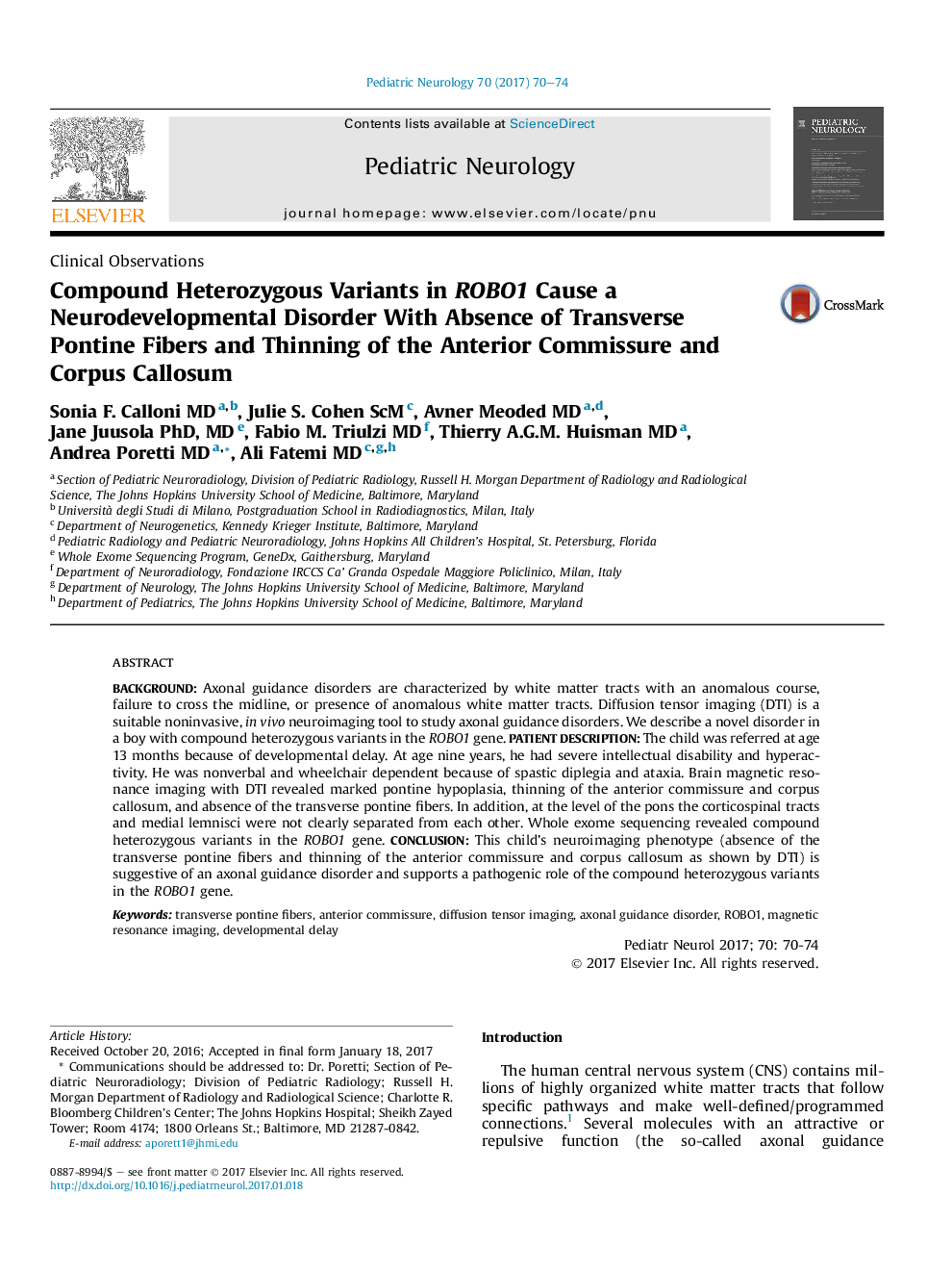| Article ID | Journal | Published Year | Pages | File Type |
|---|---|---|---|---|
| 5632861 | Pediatric Neurology | 2017 | 5 Pages |
BackgroundAxonal guidance disorders are characterized by white matter tracts with an anomalous course, failure to cross the midline, or presence of anomalous white matter tracts. Diffusion tensor imaging (DTI) is a suitable noninvasive, in vivo neuroimaging tool to study axonal guidance disorders. We describe a novel disorder in a boy with compound heterozygous variants in the ROBO1 gene.Patient DescriptionThe child was referred at age 13Â months because of developmental delay. At age nine years, he had severe intellectual disability and hyperactivity. He was nonverbal and wheelchair dependent because of spastic diplegia and ataxia. Brain magnetic resonance imaging with DTI revealed marked pontine hypoplasia, thinning of the anterior commissure and corpus callosum, and absence of the transverse pontine fibers. In addition, at the level of the pons the corticospinal tracts and medial lemnisci were not clearly separated from each other. Whole exome sequencing revealed compound heterozygous variants in the ROBO1 gene.ConclusionThis child's neuroimaging phenotype (absence of the transverse pontine fibers and thinning of the anterior commissure and corpus callosum as shown by DTI) is suggestive of an axonal guidance disorder and supports a pathogenic role of the compound heterozygous variants in the ROBO1 gene.
